I might not have been born with the brain matter required to become an engineer or industrial scientist, but I do have a close, personal connection to Schenectady’s General Electric Company (GE). For the first decade and change of my life, my family spent nearly every weekend and major holiday in Schenectady at 1089 Avon Road, where my maternal grandparents, Van and Martha Ladd, lived. They owned a majestic, two-story house in what’s known as the GE Realty Plot, a prime parcel of land that GE purchased from Union College in 1899 to transform into employee housing. The 75-acre GE Plot wasn’t any old residential neighborhood; it was a tree-lined wonderland, conjured up by and catering to the company’s top executives. Though neither of my grandparents—nor my mom or uncle, who spent their childhoods on Avon Road—ever worked at the company, at least in Schenectady, owning property on the GE Plot was (and still is) worn as a badge of honor. It’s just one of the countless ways GE engineered the meteoric rise of the Electric City into one of the most important industrial centers in the world, a place where the greatest minds in science and engineering literally dreamed up America’s future.
Nine years before workers showed up to mold the GE Plot into the modern marvel of real estate it is today, famed American inventor Thomas Alva Edison consolidated his various businesses into one-half of what would become the modern-day GE. In 1892, Edison merged his Edison General Electric Company with competitor Charles A. Coffin’s Thomson-Houston Company to form GE. While the company’s founding would eventually mean mountains of dollars of business, the two companies weren’t a perfect fit by any stretch of the imagination; it was a clash of cultures, says Harold Wallace Jr., curator of the electricity collections at the Smithsonian’s National Museum of American History in Washington, DC. Whereas Edison’s men were a rag-tag group of genius engineers, loyal to Edison, Coffin’s employees were mostly suits. So synergy took time to happen. Not to mention the fact that the company couldn’t have been established at a less favorable time in American history: The following year was the Panic of 1893, the worst financial crisis to predate the Great Depression.
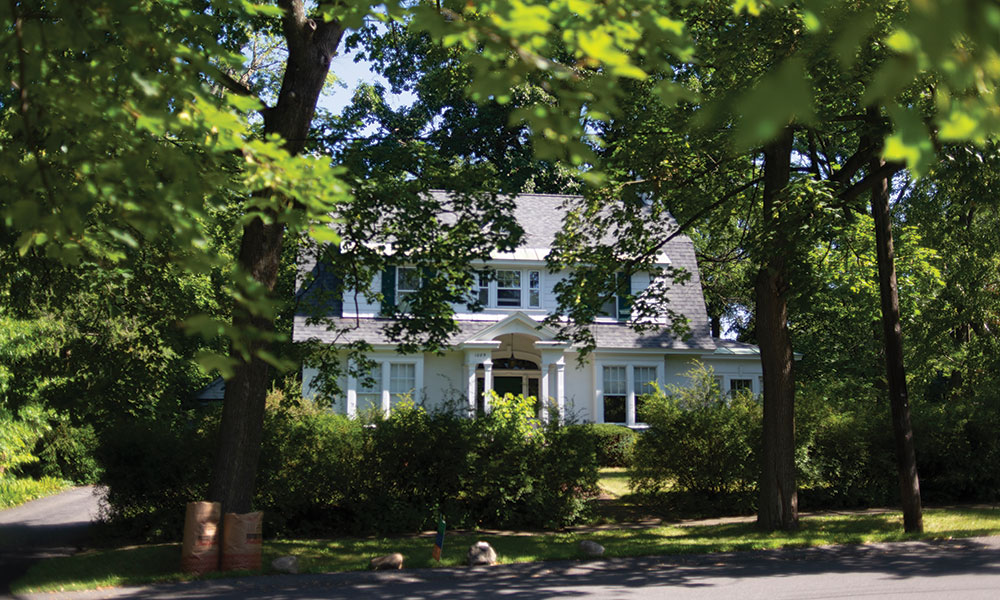
Of course, GE persevered, and by the 1900s, it was off to the races, modernizing America at an incredible clip, weaning the country off of gas-lit everything and plugging it into the earliest electrical grids. Its state-of-the-art Schenectady headquarters consisted of a 600-acre Schenectady Works industrial campus, dotted with more than 240 buildings and touted as America’s “largest electrical workshop.” “They did all the big stuff here,” says Chris Hunter, vice president of collections and exhibitions at Schenectady’s Museum of Innovation and Science (miSci), which houses one of the most comprehensive GE archives in the country. “With all the engineering facilities, it served as an incubator for products.” Arguably, the crown jewel of the operations was GE’s research and development laboratory—the first of its kind in the world—which worked in service of the company’s business units and was, basically, a giant sandbox for scientists to play around in, day and night, dreaming up products that seemed more science-fiction fantasy than reality. GE’s all-star R&D team included Charles Proteus Steinmetz, a German immigrant who quickly became the top electrical engineer in the world, developing the mathematical theory for alternating current electricity and the million-volt lightning generator—a way to simulate, in a lab, what it might be like for a piece of equipment to be hit with a massive power surge (he also co-founded GE’s research lab in his backyard barn). Bernard Vonnegut—whose brother, Kurt, worked for a spell as a GE publicist and later became a bestselling novelist—was part of Project Cirrus, an attempt by GE at manufacturing weather. (Yes, you read that right.) Also assigned to the project were self-taught scientist (and high school dropout) Vincent Schaefer, who created the world’s first artificial snowsquall and rain shower; Schenectadian Katharine Blodgett, the first woman scientist hired by GE and first woman awarded a physics PhD by the University of Cambridge in England; and the giant among men (and women), Irving Langmuir, who became the first industrial scientist to win the Nobel Prize for Chemistry in 1932.
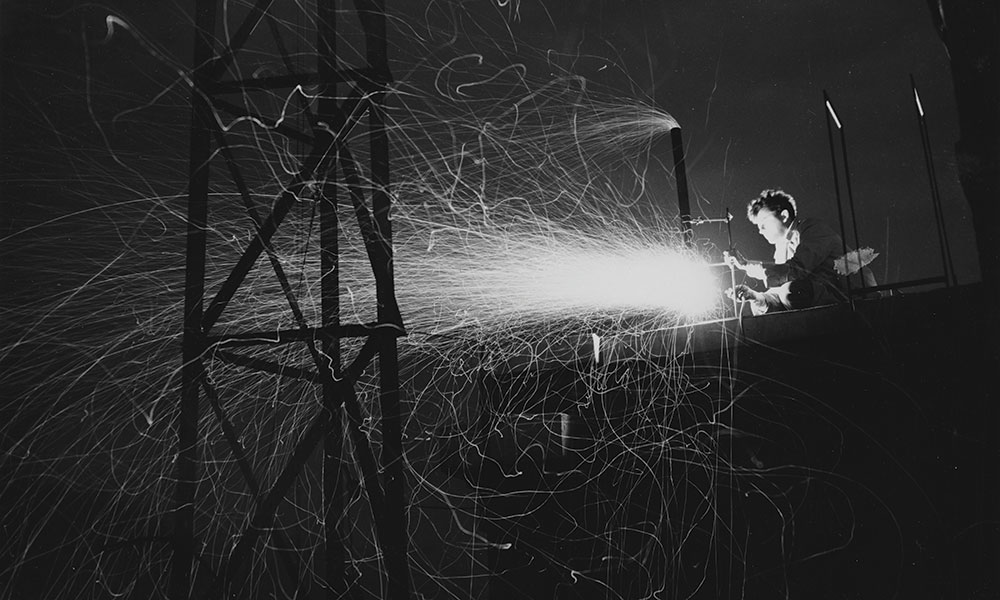
For an audience who has access to the world’s most knowledgeable research assistants (i.e. Siri or Alexa) and is starting to see the first driverless automobiles tested across the country, what GE has accomplished in more than a century might seem like child’s play. But its global importance cannot be understated. As early as 1907, the company began rolling out its first line of appliances, making kitchens into kingdoms of convenience. In 1927, GE brought to market its first Monitor Top refrigerator, and the following year, the first range with a “Calrod” heating system (a heat-conducting ceramic still used in today’s appliances). In ’53, it started selling the first toaster ovens; in ’63, the first self-cleaning ovens; and in ’78, the first over-the-range microwaves. GE researchers also dreamed up the first X-ray machine (1896), American jet engine (1941) and nuclear power plant (1957). At one point in the late ’50s, GE even had its skin in the industrial diamond-making business, with a mine in Schenectady. Just as its spring waters or racetrack did for Saratoga, GE transformed Schenectady from just another city in Upstate New York into a globally famous hub, which at its peak, employed 30,000 workers in Schenectady alone.
Those glory days didn’t last forever—and as it turned out, had been corroding for quite a few years. Despite all the societal strides GE was making for the average Joe, from 1947 to 1977, the company was also dumping around 1.3 million pounds of waxy, oily Polychlorinated biphenyls (or PCBs)—a man-made chemical—in the Hudson River from plants in nearby Hudson Falls, NY and Fort Edward, NY. Needless to say, it was catastrophic for the environment. GE’s contamination of the Hudson—affecting everything from the river’s sediment to its fish and wildlife—in part, led Congress to pass the Clean Water Act in 1972. (PCBs were banned in 1979.) And in 1984, a 200-mile stretch of the river was designated a Superfund site. (The US Environmental Protection Agency [EPA] lists PCBs as a “probable” human carcinogen linked to such maladies as thyroid disease and immune system disorders.) Overlapping that environmental disaster, which has cost GE nearly $2 billion in cleanup efforts—and at press time, has compelled New York State to sue the EPA allowing GE to stop its Hudson cleanup campaign early—was an era of company austerity unlike any American worker had ever seen before. From 1981 to 2001, under the leadership of CEO “Neutron” Jack Welch, so nicknamed because of his penchant for pink-slipping, GE began a series of massive layoffs, which took a heavy toll on Schenectady’s GE workforce. Per a company rep, GE’s regional workforce today is now just around 4000.
As time wore on, the spotlight was taken off the Electric City. GE’s headquarters shifted away from Schenectady, eventually landing out of state in Boston. Then, the Great Recession of 2008 walloped the company, and between 2017-18 alone, GE lost more than $200 billion in market value. And just this past August, allegations were levied against the company by former Bernie Madoff whistleblower Harry Markopolos, claiming that, among other things, the company had committed $38 billion in accounting fraud, comparing it to disgraced energy company Enron and telling CNN that GE was “one recession away from bankruptcy” (at press time, experts seem divided on Markopolos’ claims, though the company has been under federal investigation for its accounting practices). In a firm rebuke, GE’s current CEO and Chairman H. Lawrence Culp called Markopolos’ allegations “meritless,” assuring investors that “GE operates at the highest level of integrity and stands behind its financial reporting.” It remains to be seen what the outcome will be.
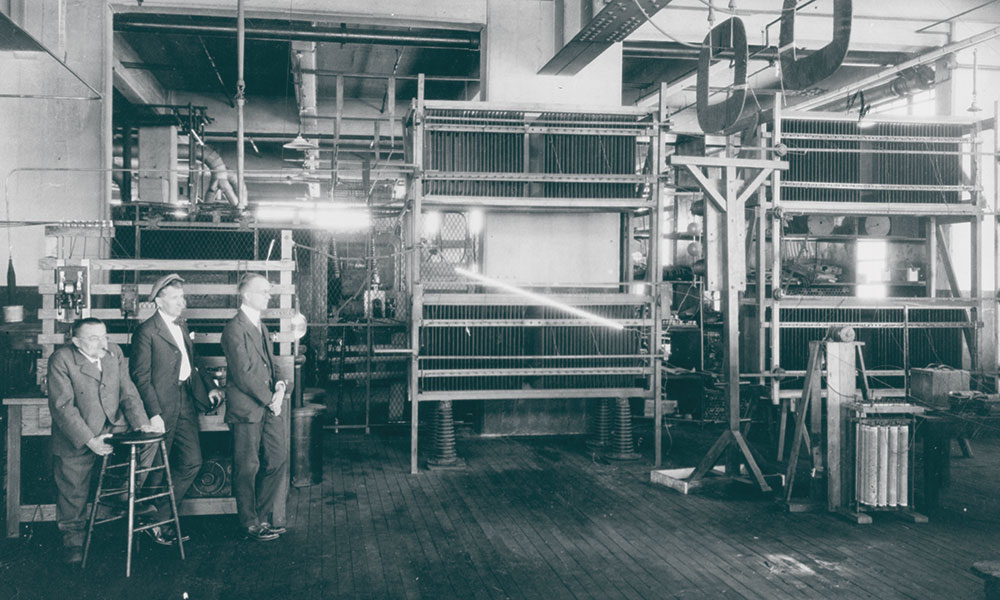
But even with its overall valuation in freefall and local headcounts dwindling, GE still has a sizable presence in the Capital Region that can be felt over a trio of locations: its research lab—renamed GE Global Research—whose 550-acre campus was moved from Schenectady to Niskayuna, NY and deals with everything from aerospace and healthcare to defense and security innovations (there’s a second research hub in Bangalore, India, hence the “global” moniker; it also sits adjacent to the former GE-run Knolls Atomic Power Laboratory, which is now overseen by the government); GE Power in Schenectady, which has been focusing its energy on the renewables business through wind, water and solar power innovations (perched atop GE Power’s Building 37 is the company’s iconic monogram sign); and a North Greenbush facility that deals with the production of digital X-ray detector technology, used in medical processes such as mammography.
During a four-hour tour of Niskayuna’s GE Global Research center and Schenectady’s GE Power last August, saratoga living was provided with behind-the-scenes access to both facilities and granted interviews with a number of senior-level employees. The week before I arrived, GE’s largest union had settled on a new four-year contract with thousands of employees, many of whom were local. (The IUE-CWA Local 301, which represents many Schenectady workers, did not respond to our repeated requests for comment.) And while the company certainly didn’t connect me with union workers, I was able, through simple observations and interactions with a number of employees, to paint a rosier picture of GE than what I’d walked in believing I’d see. For one, sizable portions of the company infrastructure were either brand new or in the process of being drastically updated. At GE Power, for instance, in an open cafeteria setting, buzzing with all manner of employees, I saw a pair of employee-musicians jamming in a corner on their lunch hour. (I have to admit I was a little jealous.)
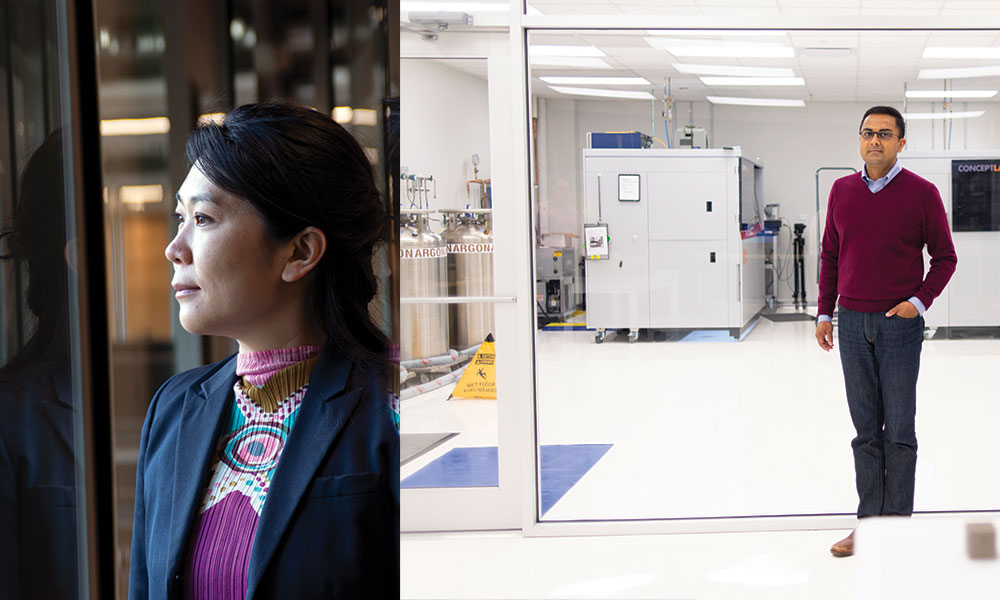
All the GE employees I had the chance to meet and interview in person were lifers, who had nothing but the highest praise for their employer (it’s possible that this was all by design, but in mentioning things like the Markopolos report to some of them, they seemed altogether unfazed by the bad news surrounding the company). Take dual 17-year GE Global Research veterans Masako Yamada, a technology manager in software and analytics; and her husband Gautam Parthasarathy, a senior scientist, who specializes in material physics and processes, and who is a Saratoga Springs High School graduate, whom I grew up with. Conducting interviews in two separate buildings, it was clear that Yamada and Parthasarathy were both very much engaged in and excited about their jobs. “I lead a group of software engineers and computer scientists,” says Yamada. One of her unit’s primary focuses is “additive manufacturing”—a fancy way of referring to GE’s industrial 3-D printing business, which not only builds and sells the printers themselves, but also uses the technology to produce products such as complex engine parts. (The business unit itself is just two years old.) “Here, a lot of our job is ascertaining what it is that needs to be done, which is very defining,” says Yamada. That’s practically unheard of in most workplaces. Imagine going to your boss and saying, “I’m just going to do what I want all day,” and having him or her say, unflinchingly, “Sure.”
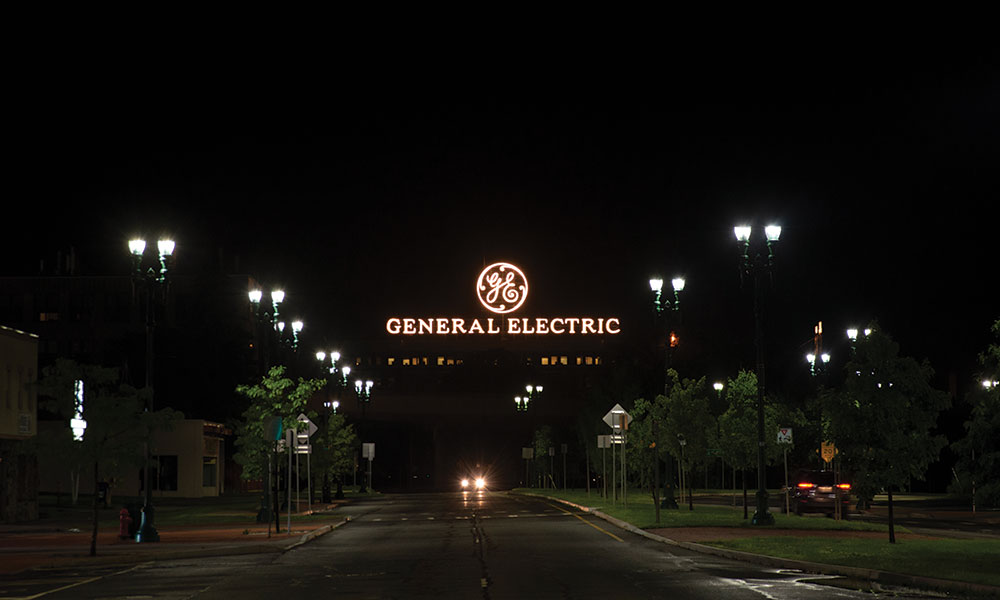
Parthasarathy, on the other hand, I met with in the additive lab, with the man who hired him in the early aughts, Chief Scientist and nearly three-decade GE vet Steven Duclos. (The room where we eventually talked reminded me of a Westworld set, minus all the rogue robots.) “There’s a common public perception that scientists and engineers are not creative—they’re automatons, they’re [working with] their head down, shoveling the dirt,” says Parthasarathy. (This was in response to me positing that the general public assumes scientists aren’t “creative”—that they’re just folks in white lab coats scurrying around labs with test tubes.) “But to be successful in the research center, you have to have a continuous innovation mindset; if you’re not creative here, you can’t be successful,” he says. Example: Cincinnati’s GE Aviation developed a turbo-prop engine for a business jet using just 12 additive parts. Before the age of 3-D printing, that same engine had been constructed out of 855 parts. “Every single day, things are being made here that, in many cases, have never been [made before] on the planet,” says Parthasarathy. (Behind a wall of glass, a trio of plain-clothed scientists—identified, simply, as Bob, Victor and Jack—stood around an additive machine, working with a bed of fine metal powder and a laser in order to make a metal part, seemingly out of thin air. They looked like they were having fun. So I asked what they were doing. Duclos said, with the germ of a chuckle in his voice, “We can’t tell you what they’re doing right now.” And the room dissolved into laughter.) “In this business, it’s extremely important to be humble,” says Parthasarathy. “If everything everybody touched turned into gold, it wouldn’t be research or difficult.”
Last year, I found myself back on the GE Plot, more than a decade following the death of my grandparents, parked illegally in front of their Avon Road property, which had exchanged hands multiple times since I’d last been there. I got out of my car and snapped a photo of the house for Instagram, and as I was writing up the post, its current owners—perfect strangers to me—emerged, at first skeptically, and eventually warmed to me and took on a tour of my old childhood stomping grounds. The next time I drive by there, I’ll think of my grandparents, for sure (I miss them every day). But I’ll also think of a time when Schenectady—as difficult as it may be to wrap my head around nowadays—was a much, much bigger deal than Saratoga Springs could’ve ever dreamed of becoming. And in many ways, it still is.


